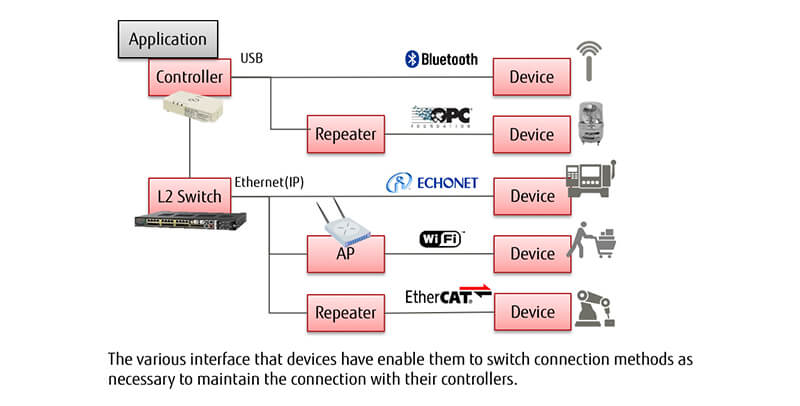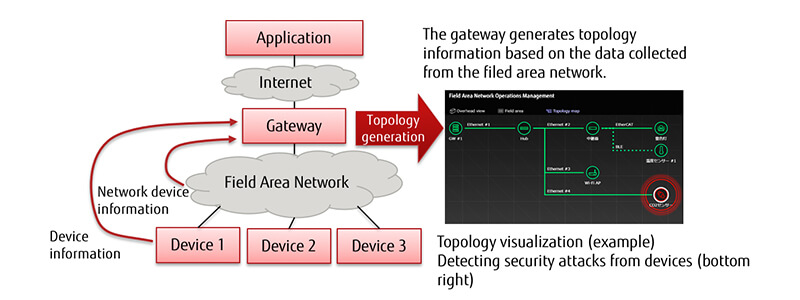Archived content
NOTE: this is an archived page and the content is likely to be out of date.
Network Visualization and Security Necessary to Popularize IoT

IoT Enriches Our Lives, But Also Brings Risks
The Internet of Things (IoT), where all devices are connected to the Internet, has spread into various areas of our lives. For example, air conditioners in people's homes are connected to the Internet and can be operated by the residents when they are out. Sensors are installed in factories and buildings to monitor the operational status of equipment and instruments, so that they can be remotely controlled and managed over the Internet. The IoT used in agriculture makes it possible to measure temperature, humidity, soil temperature and other parameters with sensors to determine the proper times to sow seeds, fertilize and water. The development of IoT is expected to make our lives and work more convenient than ever.
On the other hand, there are also concerns that the failure of IoT systems may impact our lives, such as in the case of the suspension of factory production and damage caused to vegetables grown at farms.
Since IoT devices are connected to the Internet, there is a risk of cyberattacks from outside. In fact, in one incident a large number of surveillance cameras accessible to the Internet were infected with malware and misused for cyberattacks. Also, another example of something that might happen to anyone of us is our nearly suffering heatstroke because a hacker changed the set temperature of our air conditioner via the Internet.
To use IoT safely and securely while taking such risks into account, it is necessary to properly manage devices and networks and always be ready to quickly respond to problems that occur.
Why Is Controlling and Managing IoT Devices So Difficult?
The control and management of IoT devices involves many problems. For example, most IoT devices, including sensors, are structurally simple and as such do not support the installation of management tools or anti-virus software, unlike PCs and smartphones.
Factories and buildings are often equipped with different kinds of IoT devices that are often connected using various methods, including Ethernet and other wired or wireless connection technologies. Also, protocols used to exchange collected information usually differ depending on the field where IoT devices are used, such as home electronics, gas, electricity and building management.

Complex networks connecting IoT devices are difficult to maintain
Recently, an increasing number of products support TCP/IP as standard protocols for the Internet; however, some IoT devices at factories and other locations still communicate using other methods. This means that it is not easy to uniformly control and manage a large number of IoT devices with a variety of specifications, forms and communication methods.
A problem may be caused not by an IoT device failure, but by abnormal operations due to a network failure. For example, a partial network disconnection may occur due to interference caused by an overlapping of frequencies between the microwave oven used in a factory rec room and a wireless network connecting IoT devices.
Visualizing Networks Connecting IoT Devices
How can we build safe and secure IoT networks while managing a wide variety of IoT devices that require different connection methods and protocols? Fujitsu has developed a network control technology based on a fresh perspective involving the visualization of the entirety of the networks that connect IoT devices.
This technology installs a gateway that relays information exchanged between different protocols on a network consisting of IoT devices and other equipment. The gateway implements the same security measures as those used for PCs by isolating the IoT network from the Internet to prevent attacks on IoT devices from outside. It also has a function to interpret various protocols and detects communications between IoT devices that are operating in a suspicious manner just in case they are infected with malware.
The gateway generates overall topology information (profiles and connection configurations) for IoT devices and network devices based on the collected data. This helps the gateway to detect where failures have occurred and devices that are carrying out cyberattacks.

Topology management technology
By identifying and managing the interconnectivity between IoT devices and network devices across whole networks, if a malware-infected IoT device were to be used to attack other devices, for example, suspicious communications can be detected by comparing the ordinary communication routes managed by the gateway with the communication routes in question. Because communication methods and data formats are managed for each IoT device, IoT devices operating in a suspicious and abnormal way can be detected.
This newly developed network control technology supports not only TCP/IP communications, but also the various protocols used in factories and the like. With this method, you can visualize IoT networks without changing your existing IoT devices. Furthermore, the prompt detection of problems allows cyberattacks to be quickly responded to, which leads to improved security.
Controlling IoT Networks Supports Companies in Saving Energy and Reducing Costs
Not only does introducing network control technology improve management efficiency and security through visualization, it also allows users to identify operating rates and failure rates by monitoring the operational status of IoT devices. Based on this information, users can consider ways to use devices that reduce energy losses in order to save energy and lower costs.
Fujitsu's thoughts regarding the future spread of IoT technology are that the key will be whether IoT device networks can be safely and securely used while fully understanding their status through the visualization of entire networks. Fujitsu will support the safe and secure use of IoT across a diversity of industries and sectors through IoT visualization.